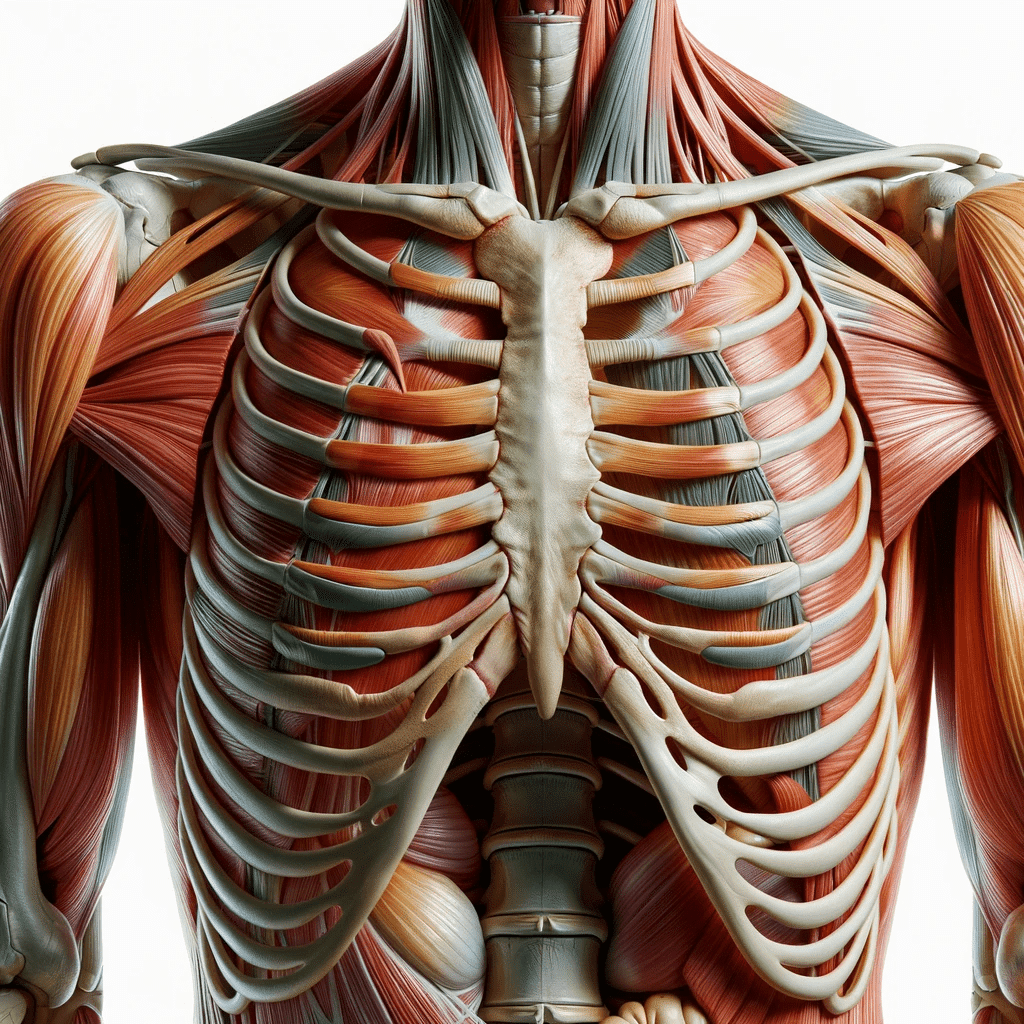The Rib cage is a primarily protective structure, encircling the heart and lungs. In your human body, normally you have (yes, if you can read this, you are human) 12 thoracic vertebrae connected to 24 ribs. The rib cage is also known as the Thoracic cage and is a core section of the human skeleton, provide support for neck, thorax, upper abdomen, and back. The word costal comes from Latin, where costae means rib.

The 7 highest pairs of ribs are known as the true ribs, because they attach to the sternum, the T shaped bone at the front of the chest. The 5 lower pairs of ribs, are known as false ribs because they connect to the costal (rib) cartilages above them. 2 of these ribs are known as floating ribs, because they do not attach at the front, and connect only to the lower thoracic vertebrae. The 5 lower ribs are what allows for respiration as the cartilage expandeds. The upper ribs are more functionally protective and attach to the sternum, the armored frontal plate for the heart and lungs.
The sternum has 3 primary parts:
- The Xyphoid process at the bottom – cartilage that normally becomes bone as an adult, is located at the same level as T6 and attached to the 7th rib and remaining lower ribs through their attachments to the 7th rib.
- The Gladiolus in the middle – this is the primary structure of the sternum, is flat, and is attached to the pec majors. It attaches to ribs 2 through 6.
- The Manubrium at the top of the rib cage – This articulates (moves) with the clavicles, or collar bones. It forms the base of the jugular.
At the floor of the Thoracic cavity the diaphragm expands and contracts and separates the lungs from the abdominals and organs. The top of the rib cage connects directly to the neck through the scalene muscles, and SCM. The serratus runs along ribs 1-8 and is the muscular outline of the ribs and connects the latimus dorsi and shoulder blades to the pectoralis major. Underneath the serratus you have the intercostals, which is a group of muscles intertwining in the ribs. All of these muscles play a role in breathing, if only for structural support of the rib cage and diaphragm.
Overall, the rib cage is one of the more elegant and multifunctional support structure for the human skeleton, musculature, and the major organs of the chest. See some more pictures below:


